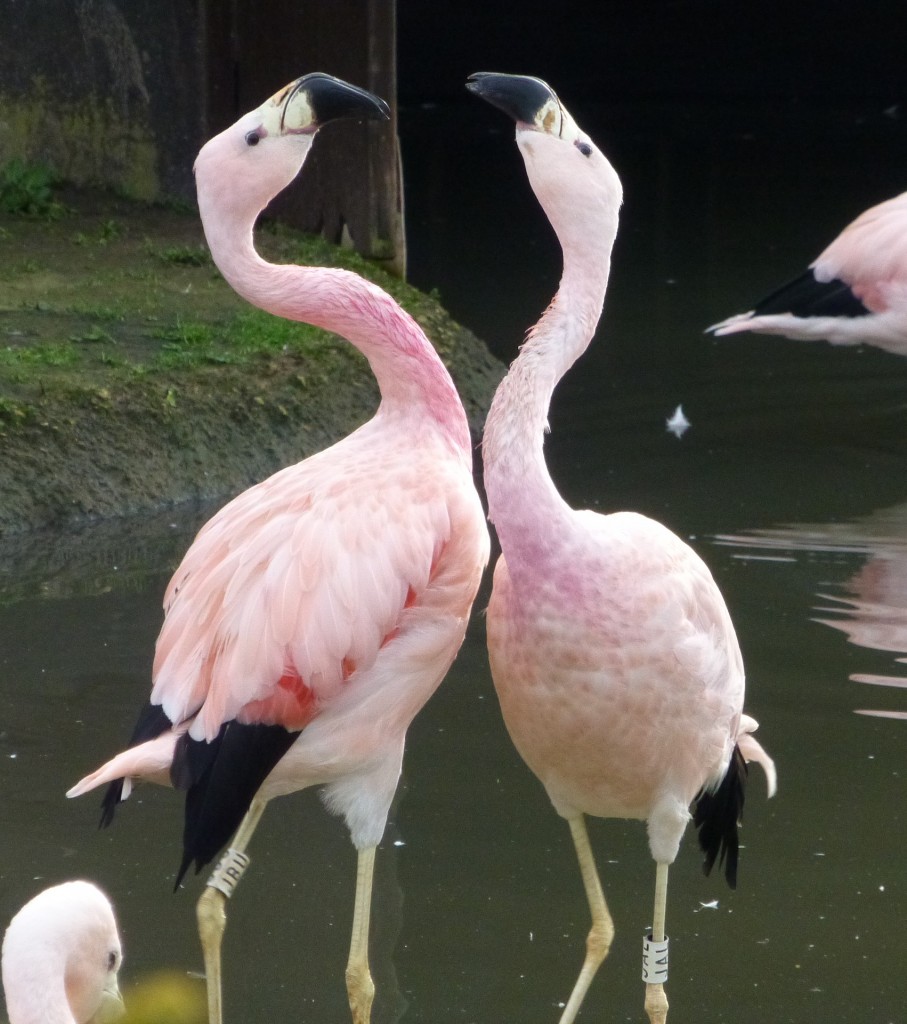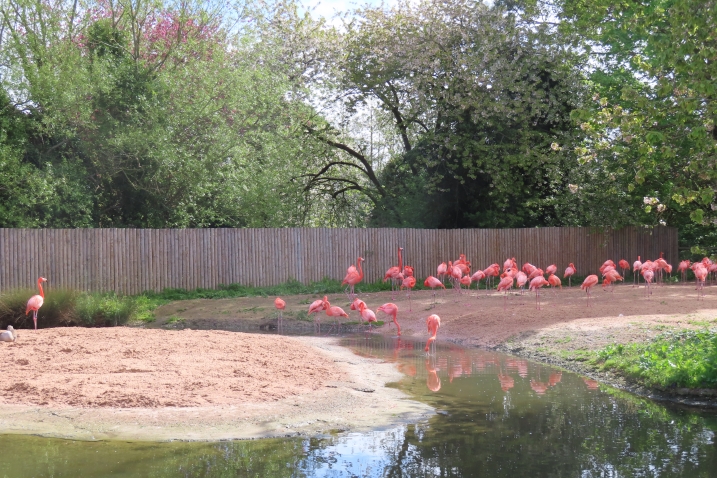Birds of a feather...
... Don't always flock together!
One of the MSc students that I have had at WWT Slimbridge helping to collect data on two specific groups of flamingos over spring and summer 2014 is off to an animal behaviour conference in London in December to present some interesting findings on flamingo personalities and how these can influence the flamingo soap opera. You can measure flamingo personality by looking at specific behaviours that might be common to all birds in a flock. So for example, how adventurous are they? How likely are they to get into a fight? Are they more likely to be a leader or a follower? Certainly in the Caribbean flamingo flock, birds show a very diverse array of characteristics. And there does seem to be a specific mixing of birds with similar personalities. Maybe opposites don't always attract?
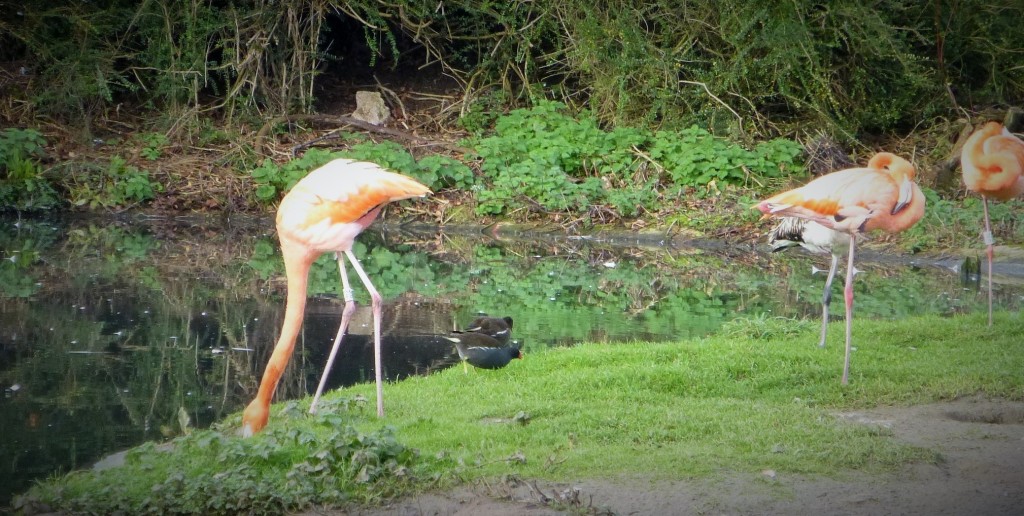 Adventurous Caribbean. What makes some flamingos head out on their own, whereas others will follow the crowd?
Adventurous Caribbean. What makes some flamingos head out on their own, whereas others will follow the crowd?
Being aggressive is something that is really obvious, and very easy to measure. Whereas identifying "adventurous" flamingos (as shown in the photo above) takes time and can be open to suggestion, you clearly know when one bird is not liking another one. Remember that aggression is not always bad, and it can be a helpful way of keeping a hierarchy (or "pecking order") in place. I have mentioned before about evident differences in aggression between the six species. It's very interesting to see. The geriatric greater flamingo in his Andean Pen retirement home can still be quite grumpy. See the photo below. One of the younger Andeans, minding its own business, gets shouted at for no apparent reason.
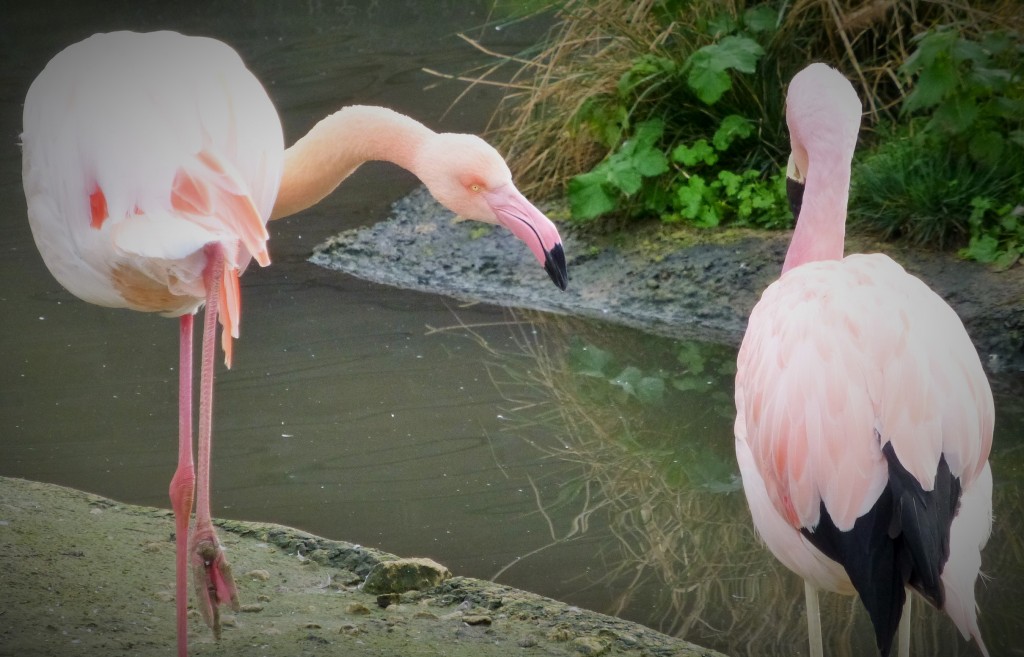 A grumbly greater flamingo shouts at a nearby Andean. The more overtly "pushy" character of greater flamingos contrasts with the more laid-back style of the Andeans. Well, laid back for most of the time that is...
A grumbly greater flamingo shouts at a nearby Andean. The more overtly "pushy" character of greater flamingos contrasts with the more laid-back style of the Andeans. Well, laid back for most of the time that is...
When feathers do get ruffled however, and birds come to blows, that is when you really see the true personality of the individuals involved. Perhaps it was the chilly morning and moods were dark, but the normally placid Andean flock were in no mood to play nicely. A few photos below that shows how things progress. Aggression normally starts when one bird "bumps" another. This is the only way that I can describe and I have yet to be quick enough to capture on film. But this bumping looks deliberate. Almost as if the flamingo, within whom the red mist has descended, is keen for a fight. If the birds are evenly matched, then they will squabble and joust and shove and push until one gives way, or until the best friend/partner of either bird involved comes to help out. If one bird is more dominant, larger or brighter in colour, then this is normally enough to avoid a full-blown fight.
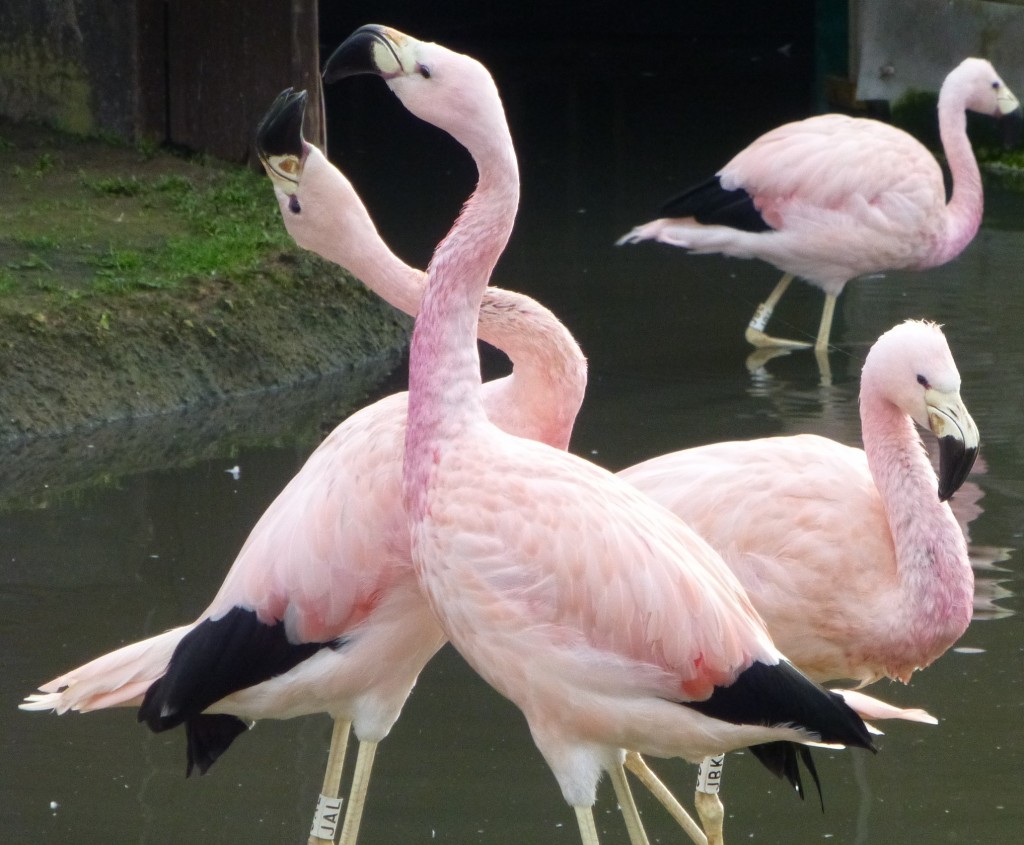 Not known for their bad tempers, feathers do occasionally fly in the Andean flock. It normally starts when one bird bumps into another.
Not known for their bad tempers, feathers do occasionally fly in the Andean flock. It normally starts when one bird bumps into another.
Squabbling with beaks and trying to shove each other over is the most serious form of flamingo aggression. It doesn't last that long but when birds are equally matched, neither gives way easily.
So the many patient hours of data collection are well worth the effort. We can get a good idea what types of bird are within each flock, and how these different personality types can affect important goings-on like breeding or access to food. And it also provides good support for furthering these investigations in the coming summer.
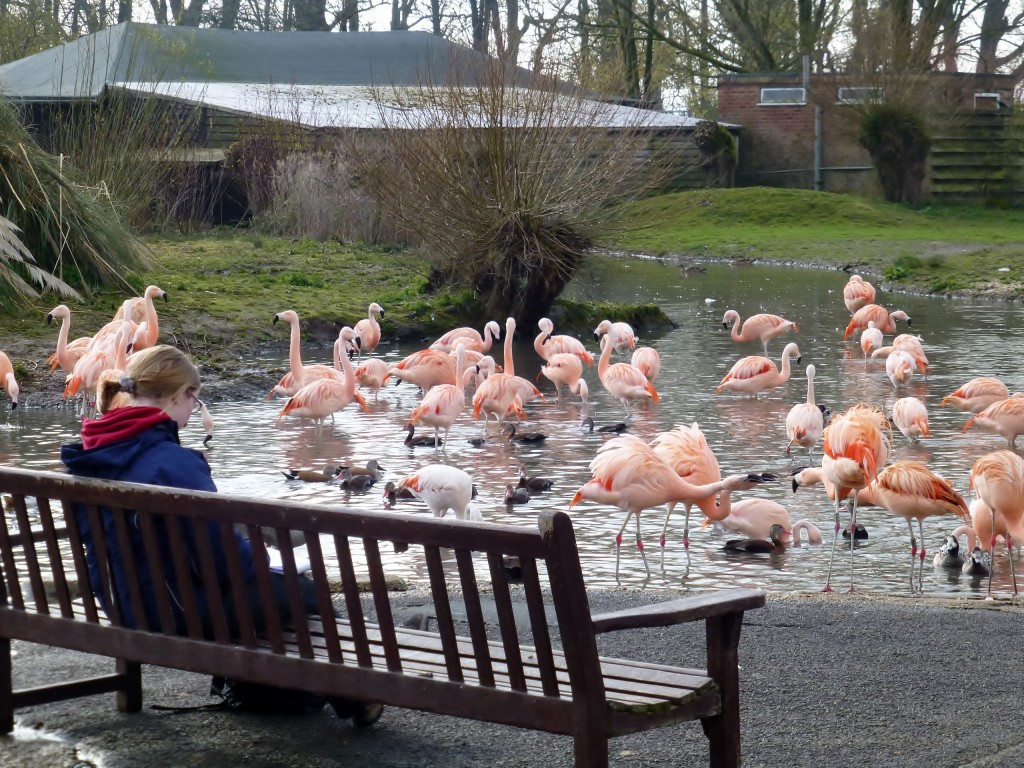 MSc student Finn patiently records the different personalities of the Slimbridge flamingos. At least at the time this photo was taken, there was something interesting going on!
MSc student Finn patiently records the different personalities of the Slimbridge flamingos. At least at the time this photo was taken, there was something interesting going on!
